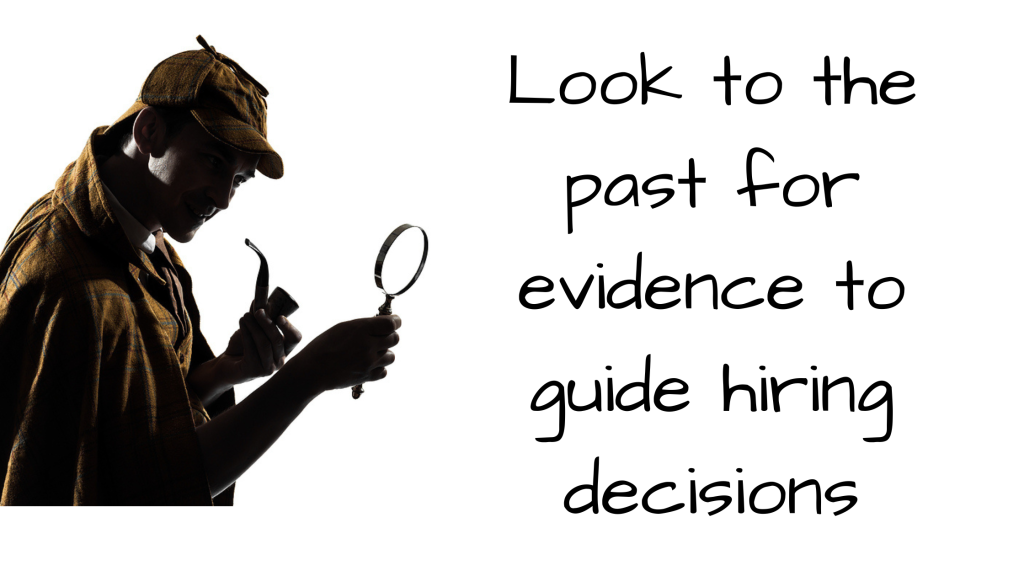
I have something in common with one of the characters in The Fourth Man, a short story from The Witness for the Prosecution and Other Stories, by Agatha Christie.
“ ‘Very interesting,’ said Canon Parfitt. ‘Ah! Wonderful science—wonderful science.’
“And inwardly he thought to himself: ‘I can get a most interesting sermon out of that idea.’ ”
It’s been decades since I wrote a sermon and I don’t expect to deliver one any time soon, but often what I read or experience becomes the inspiration for a blog post, or even a book.
Frequently, this occurs when I read a mystery or watch a movie or TV show that portrays detectives as they solve crimes, usually beginning with the discovery of a body under suspicious circumstances. I see similarities between how fictional detectives solve murders and how managers and supervisors should conduct hiring interviews and reference checks.
You can identify the right people to hire the same way detectives decide which suspect to arrest.
Cat Among the Pigeons, the 32nd Hercule Poirot book by Agatha Christie, includes several passages that represent best practices, whether for hiring or solving a murder.
In this novel, the early investigation into the murder of a teacher at Meadowbank, a prestigious British girls boarding school, is conducted by police Inspector Kelsey, who later partners with Belgian sleuth Poirot to solve this and other murders.
“Kelsey returned from the bypath he had been pursuing. ‘Now, Miss Johnson, let’s hear what happened.’”
This open-ended question allows the woman who discovered the body to tell the inspector what’s top of her mind before the inspector begins his usual investigative questions.
Like Miss Johnson, job candidates have thoughts they want to share right away. Opening interviews by asking the candidates to “take a couple of minutes to tell us what in your training and background has prepared you for this position,” provides an opportunity for them to deliver their essential message in response to the unasked question, “Why should we hire you?”
Both Inspector Kelsey’s and your question are short and don’t lead the witness or candidate in any direction. The responses to these questions may not produce a lot of useful information but they are a simple, stress-reducing way to get the witness or candidate talking.
Later, Agatha Christie describes a trait that makes the police officer an effective investigator.
“Inspector Kelsey was a perceptive man. He was always willing to deviate from the course of routine if a remark struck him as unusual or worth following up.”
It’s not unusual for a suspect, witness, candidate or reference to give incomplete answers. Detectives and interviewers should be prepared to probe to learn more.
When deciding what to ask candidates and references, interviewers should consider what they hope to learn about the candidate’s experience from each question. They should be prepared with followup questions if the initial responses from candidates or references is incomplete. Besides freeing interviewers from formulating followup questions on the spot, which can break your concentration on what is being said, having pre-scripted questions ensures fairness in the interview process. All candidates will be invited to describe their experiences in a similar fashion.
It’s impossible to anticipate every circumstance that will occur during an interview and occasionally interviewers will find themselves without a prepared followup question. The interviewer may need to improvise, such as occurred when Hercule Poirot was questioning a potential witness.
“‘I see,” said Poirot. He went on, “Did you ever see at Meadowbank anyone that you’d seen out in Ramat?’
“‘In Ramat?’ Jennifer thought. ‘Oh no—at least—I don’t think so.’
“Poirot pounced on the slight expression of doubt. ‘But you are not sure, Mademoiselle Jennifer.”
Inspector Kelsey displays another technique that interviewers should add to their skill set.
“‘Anyway,’ said Kelsey, ‘you went to Miss Chadwick and woke her up. Is that right?’”
The standard advice is to avoid questions that can be answered with a single word like yes or no, because you will learn little from brief responses. But there are exceptions to this rule.
There may be points during an interview or investigation when it’s desirable to confirm your understanding of what was said. You want to be certain that your conclusions are based on the facts, just as the facts should lead to identifying the murderer.
A variation of this technique can be used to rein in particularly verbose candidates. Interrupt a long-winded response to summarize what you hear and ask, “Is that right?”
Then pray that the candidate’s answer is yes.
In addition to confirming what you believe the candidate said, this is also a way to keep your interview on schedule.
The shared goal of interviewers and detectives is to get it right. The best tool you have at your disposal is the set of questions you ask. The better your interviewing skills, the better the quality of information that will be available to you when deciding the right person to hire (or arrest).
No detective wants an investigation to end with a courtroom acquittal. And you don’t want to fill a vacancy with the wrong person.
==
Want to learn more about questions to ask during interviews? Schedule an Interview Right to Hire Right workshop for your leadership team. Contact Nelson (email nmscott@telus.net or text/phone 780-232-3828) to set a date for your workshop or to learn more.
Planning a conference or convention? Nelson’s How Would Sherlock Hire? program may be just the breakout session you are looking for.

